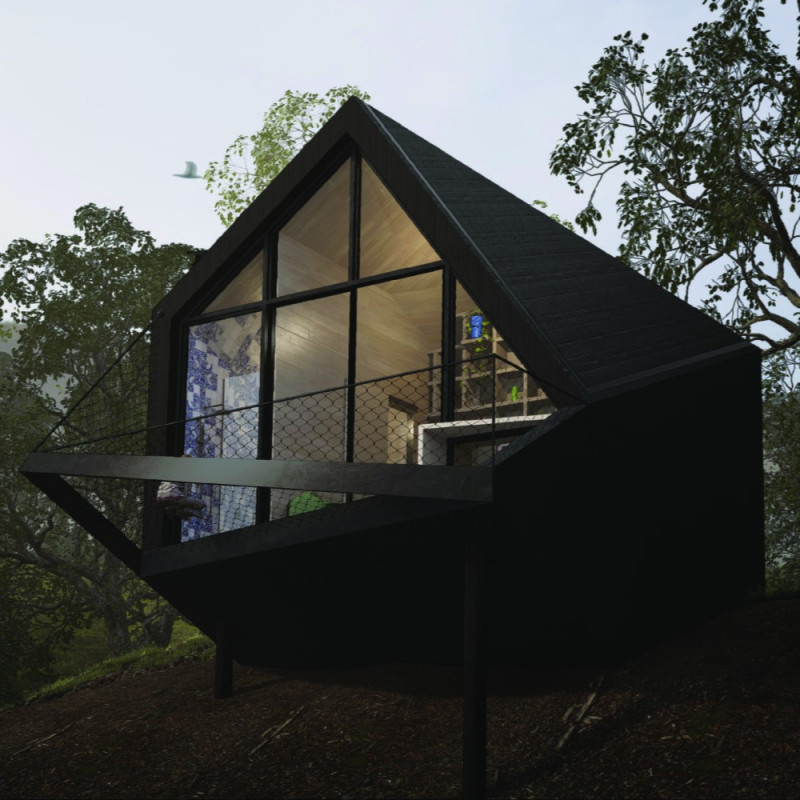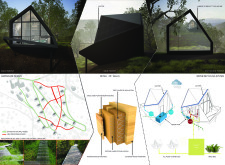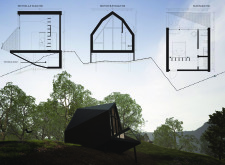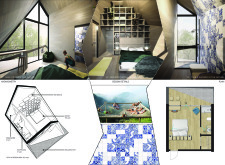5 key facts about this project
The Origami Nesting Box is a well-planned structure that combines principles of Yoga with everyday living. Located in a natural setting, it promotes mindfulness and well-being through its design and function. It serves not only as a residence but also as a space for meditation, focusing on enhancing physical and mental clarity.
Design Concept
The design focuses on connecting indoor and outdoor spaces, encouraging a close relationship with nature. The layout permits easy movement throughout, allowing people to interact with the building and the landscape at the same time. Incorporating Origami techniques adds a unique aspect, allowing occupants to participate in meditative folding. This provides a way to achieve states of concentration and peace.
Landscape Integration
Incorporating the landscape design involves existing pathways complemented by new pedestrian routes. These paths facilitate movement while keeping the natural beauty of the area intact. A metal grid allows for safe passage and enhances the connection between the structure and its environment. This approach makes it easy for users to explore the outdoors around the building.
Sustainability Features
A significant part of the design focuses on managing water use efficiently. A rainwater collection system collects water from the roof and directs it through gutters and filters into storage tanks. This system connects to an Imhoff tank and reed bed to handle waste properly. Such features highlight the project's commitment to responsible water management and environmental care.
Interior Layout
Inside, the layout includes distinct areas for crucial living activities, such as wardrobes, bathrooms, and spaces for relaxation. This design promotes comfort and functionality while adding places for quiet reflection. The careful arrangement of these spaces supports a healthy lifestyle, fostering a strong connection to nature and personal well-being.
Large windows offer natural light and views of the surrounding landscape. This design feature brings the outdoors inside, enhancing the feeling of being in touch with nature.






















































